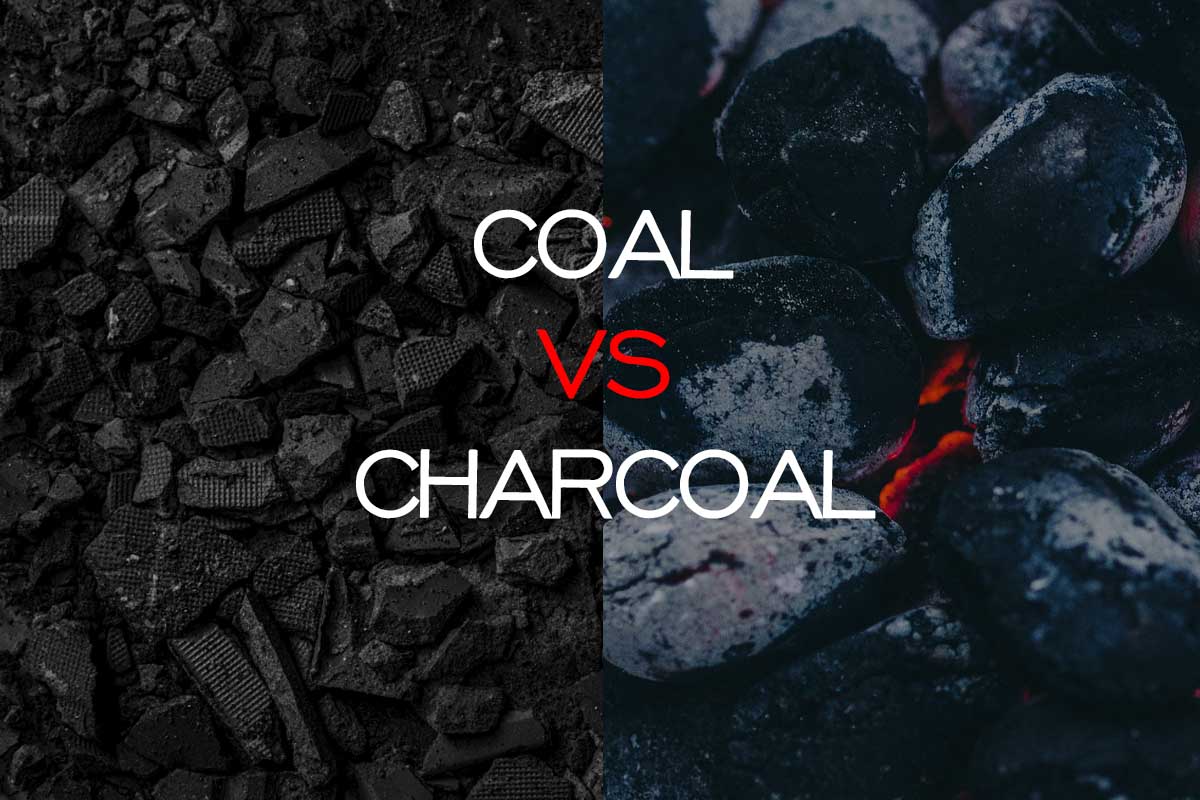When it comes to creating a warm and inviting atmosphere in your home, understanding the main difference between coal and exploring the characteristics of various types is crucial. These types include anthracite coal, lignite coal, and brown coal. The type of fuel you choose for your fireplace plays a pivotal role in achieving the perfect ambiance.
In this exploration of fireplace fuels, we will delve into the nuances of coal and charcoal. We’ll compare their merits to help you make an informed decision for achieving optimal fireplace performance.
Understanding Coal Types, Characteristics, and Suitability for Fireplaces
Fireplace fuels come in various forms, and coal stands as a reliable option with its versatile types. As we delve into the diverse coal landscape, we’ll shed light on its distinct characteristics. We’ll primarily focus on bituminous coal, renowned for its fireplace applications.
Understanding the potential environmental impact of coal usage is essential. This is particularly in terms of addressing carbon monoxide concerns and its role as a fossil fuel in indoor heating. This aspect forms a crucial part of our exploration.
Exploring Different Types of Coal
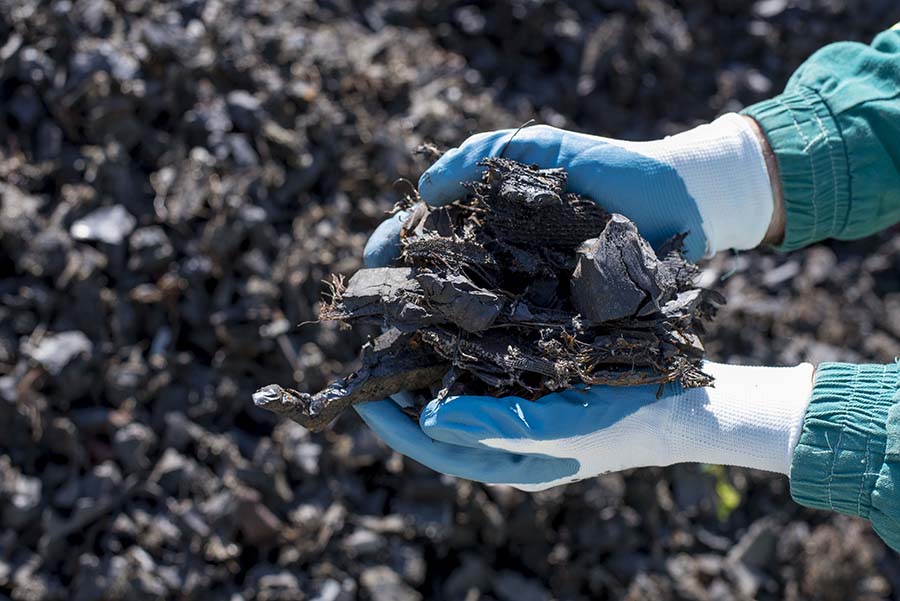
Before delving further into the suitability of coal for fireplaces, understanding the diversity among coal types is vital. These types include anthracite coal, subbituminous coal, lignite coal, and brown coal.
Each type, ranging from anthracite to lignite, boasts distinct properties. These properties influence its combustion characteristics, heat output, and usability in various settings.
Exploring these variations is essential. It helps in selecting the right coal type for optimal fireplace performance.
Bituminous Coal Characteristics and Fireplace Applications
Bituminous coal stands out among the array of coal types for its relevance in fireplace applications.
This type is recognized for its moderate carbon content. It offers a balance between heat output and ease of ignition.
Understanding the specific characteristics of bituminous coal is essential. This includes its burn rate, ash production, and heat intensity. These aspects are crucial in determining its suitability for your fireplace needs.
Environmental Impact of Coal Usage
Assessing coal’s suitability for fireplaces necessitates considering broader environmental implications. These implications encompass coal mining and coal gas. The combustion of coal releases various pollutants into the atmosphere. These pollutants include carbon dioxide and particulate matter.
As a result, these emissions contribute to air quality degradation and have long-term consequences for global climate change.
Examining the environmental footprint of coal usage provides insight into its impact beyond the confines of your fireplace.
Addressing Carbon Monoxide Concerns for Indoor Use
Burning coal indoors poses a significant safety concern – the potential for carbon monoxide emissions.
Carbon monoxide is a colorless and odorless gas. It can accumulate to dangerous levels if coal deposits are not properly managed. Understanding the sources of carbon monoxide during coal combustion and implementing appropriate ventilation and monitoring measures are crucial. This is for ensuring the safety of indoor coal use.
Examining Coal as a Fossil Fuel in Indoor Heating
Coal’s role in fireplaces extends to its historical significance as a traditional indoor heating source. However, the use of coal as a fossil fuel raises concerns about its environmental impact and sustainability.
Examining the broader implications of coal usage in indoor heating sheds light on the trade-offs between historical significance and the imperative to transition to cleaner alternatives.
Unveiling Charcoal Production, Types, Benefits, and Fireplace Applicability
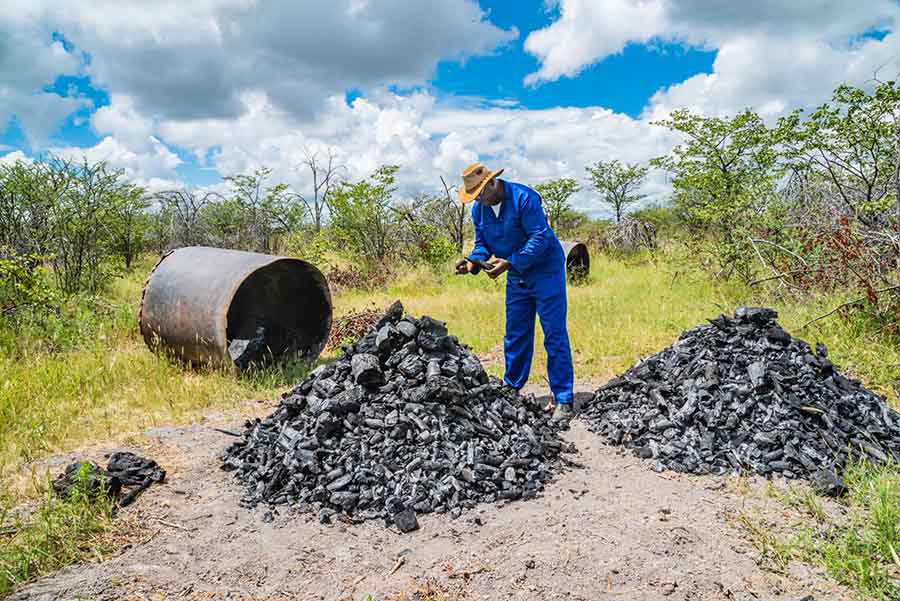
In the realm of alternative fireplace fuels, charcoal emerges as a compelling contender. It’s essential to understand the nuances of charcoal production. It’s also important to explore different available types and their distinct benefits. This unveiling opens possibilities for enhancing your fireplace experience.
Furthermore, delving into the applicability of charcoal as a fireplace fuel provides insight into how this eco-friendly option can elevate both warmth and environmental consciousness in your home.
What is Charcoal and How is it Produced?
Charcoal, often considered a cleaner and more sustainable alternative to traditional coal, is a product of controlled burning. Organic materials, typically wood, are subjected to high heat and low oxygen conditions. This drives off volatile compounds, leaving behind carbon-rich material.
This process creates charcoal, a fuel with unique properties that make it an intriguing choice for indoor heating. Understanding the intricacies of charcoal production sheds light on its origin and sets the stage for evaluating carbon compounds and their advantages.
Lump Charcoal vs Briquettes – Choosing the Right Option for Your Fireplace
Within the realm of charcoal, a choice presents itself: lump charcoal or briquettes.
Lump charcoal consists of natural chunks of wood, each with its size and shape. On the other hand, briquettes are uniform blocks made from compressed charcoal and other additives. The decision between these two options goes beyond aesthetics; it affects burn time, heat intensity, and even environmental impact.
Exploring the nuances of lump charcoal and briquettes empowers homeowners to choose the option that aligns best with their fireplace needs.
Environmental Considerations in Charcoal Production
While charcoal is often heralded for its cleaner burn compared to coal, its production process raises environmental considerations.
Sourcing wood for charcoal, the potential impact on deforestation, and emissions generated during the carbonization process contribute to the ecological footprint of charcoal production.
Evaluating these environmental factors provides a more holistic understanding of the sustainability of charcoal as a fireplace fuel.
Types of Charcoal Best Suited for Indoor Fireplace Use
Not all charcoals are created equal, especially for fireplace applications. Some types of charcoal, like extruded charcoal, are better suited for indoor use due to factors such as burn time, heat output, and minimal smoke generation.
Delving into the distinct characteristics of charcoal burns that excel in indoor fireplace settings ensures homeowners make informed choices aligned with their heating needs and the desire for a comfortable and eco-conscious home environment.
Comparing Coal and Charcoal as Fireplace Fuels
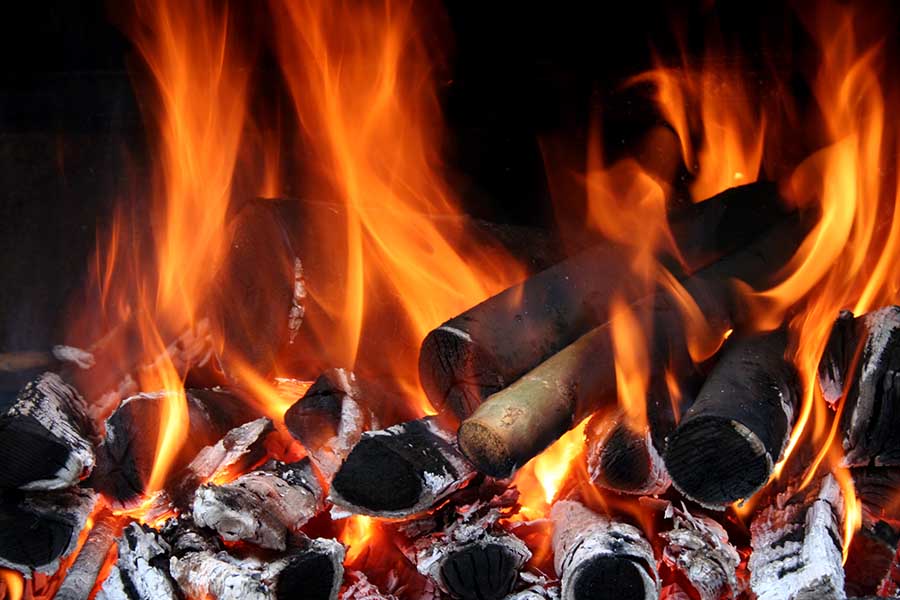
When selecting the optimal fuel for your fireplace, a direct comparison between coal and charcoal yields valuable insights.
This exploration delves into key aspects that define their performance, environmental impact, and influence on indoor air quality.
By delving into these factors, homeowners can make well-informed decisions aligned with heating needs and commitment to sustainability.
Heat Output and Efficiency
Heat output and efficiency are central considerations in fireplace fuel selection. Coal and charcoal each possess their heat-generating properties, impacting the warmth they provide and the duration of their burn.
Evaluating the heat output and efficiency of both fuels sheds light on their capacity to deliver high temperatures and consistent, comfortable indoor heating.
Environmental Considerations and Carbon Footprint Comparison
With sustainability at the forefront, comparing carbon footprints of coal and charcoal is imperative.
Coal’s carbon-intensive combustion versus charcoal’s cleaner burn necessitates thorough examination of their environmental impacts.
Understanding carbon footprint comparison between the two fuels offers insights into their contributions to climate change. It also provides a basis for more eco-conscious heating choices.
Combustion Characteristics Coal vs Charcoal in Fireplace Settings
Combustion characteristics of coal and charcoal play a vital role in their suitability for fireplace use.
Factors such as burn rate, ash production, and emission of pollutants influence performance and the overall fireplace experience.
By comparing combustion characteristics of coal and charcoal, homeowners can make choices aligned with preferences for convenience, maintenance, and air quality.
Coal vs Charcoal Factors Influencing Indoor Air Quality
Indoor air quality is a paramount concern when using any fireplace fuel. Both coal and charcoal have implications for air quality within your home.
Coal’s potential for carbon monoxide emissions and particulate matter versus charcoal’s tendency for cleaner combustion requires nuanced evaluation.
Exploring these factors provides insights into potential impact of each fuel on indoor air quality, allowing homeowners to prioritize health and comfort.
Safety, Convenience, and Maintenance
Promoting a safe, convenient, and easily maintainable fireplace environment is paramount for comfortable heating experience.
This segment explores comprehensive facets encompassing secure and effortless operation of your fireplace. This includes identification and mitigation of potential risks, pragmatic recommendations, and comparison in simplicity of handling and storage between coal and charcoal.
Coal vs Charcoal Costs for Fireplace Use
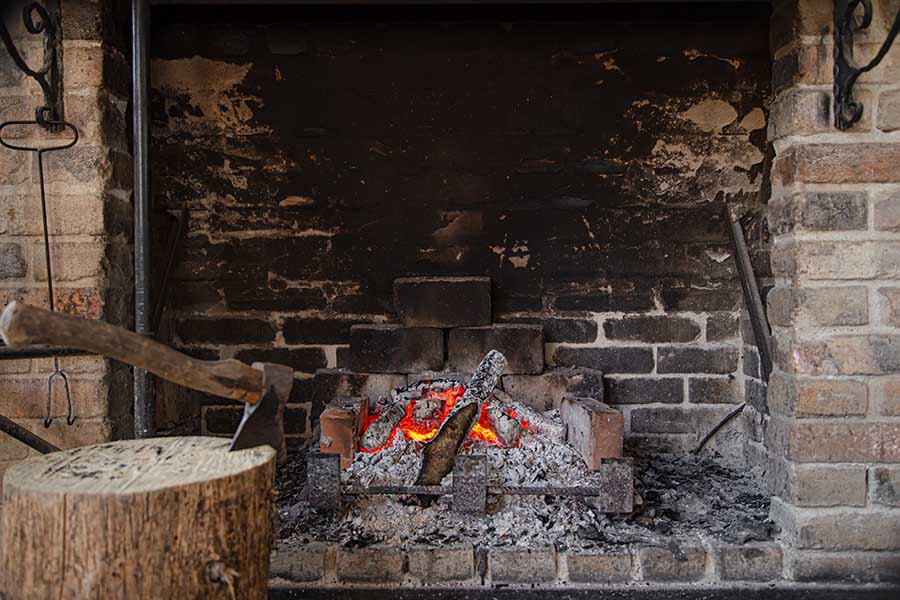
Comparing costs of coal and charcoal for fireplace use involves assessing not only initial expenses but also long-term financial implications.
Factors such as fuel prices, regional availability, and burn efficiency contribute to economic considerations.
By examining cost dynamics of both fuels, homeowners can make financial decisions aligning with budget and heating requirements.
Environmental Impact in Indoor Heating
As world embraces environmental consciousness, impact of indoor heating on environment takes center stage. This section scrutinizes broader implications of your fireplace fuel choice on local and global ecosystems.
By examining environmental footprint of your chosen fuel, you gain insight into how your decision contributes to sustainability and responsible energy consumption.
Transitioning to Environmentally Friendly Options
Embracing environmentally friendly heating options becomes imperative in today’s world. This section highlights charcoal’s potential as an eco-conscious alternative. It emphasizes its renewable nature and reduced carbon emissions compared to traditional coal.
Exploring how charcoal coal aligns with more sustainable approach to indoor heating encourages homeowners to make choices prioritizing well-being of both homes and planet.
Implications of Choosing Charcoal as a Renewable Indoor Heating Source
Selecting charcoal as a renewable indoor heating source carries significant implications. This section delves into multifaceted benefits of this choice, from reduced carbon emissions and improved air quality to supporting sustainable charcoal production practices.
By choosing charcoal, homeowners actively contribute to more responsible and environmentally friendly heating future.
Making the Right Choice for Your Fireplace
Selecting optimal fuel for your fireplace necessitates considering various factors. These factors include heat output, safety, environmental impact, and convenience. By making informed decisions based on your needs and priorities, you can elevate your fireplace experience. Additionally, you can contribute to a cozier, eco-friendly, and efficient home heating future.
Conclusion
In conclusion, choice between coal and charcoal as fireplace fuels is a significant one, profoundly impacting not only immediate comfort but also environment and well-being of future generations.
By recognizing pivotal role of fireplace fuel, understanding nuanced differences between coal and charcoal, and thoughtfully evaluating safety, convenience, and environmental factors, you can ultimately make informed choice genuinely aligning with your values and aspirations.
Consequently, your decision significantly contributes to fostering more sustainable, efficient, and ultimately rewarding fireplace experience. This enhancement not only amplifies ambiance of your home but also augments its positive impact on planet.

